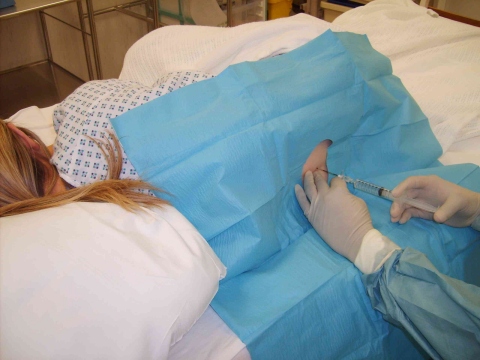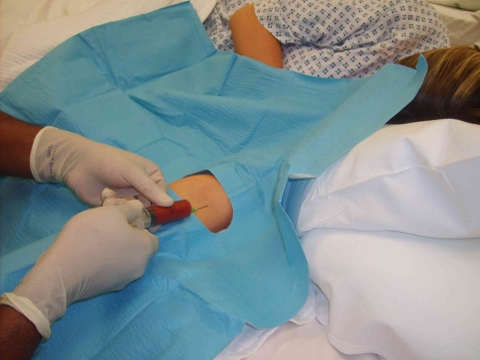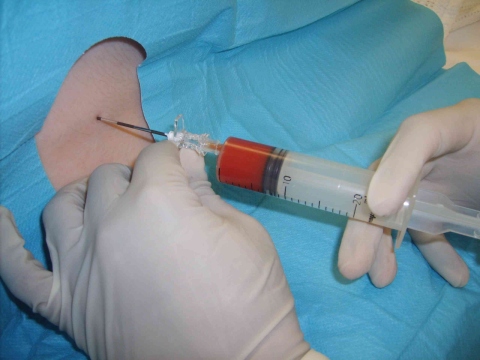Blood Patch Procedure
Contraindications are as those for epidural insertion (debate exists regarding use in HIV positive and oncology patients). Performing a blood patch requires ideally two practitioners. These images show the important highlights.
Fig 1 The patient is positioned, usually in a lateral position to minimize postural exacerbation of headache. The epidural space is located in the usual manner with routine aseptic precautions.
Fig 2 Next, 20–30 ml of the patient’s own blood is taken under fully aseptic conditions from (usually) an arm vein. Meticulous asepsis is vital to minimise the risk of transferring skin micro-organisms into the epidural space.
Fig 3 The syringe is then connected to the epidural needle and all of the blood slowly injected. Injection is abandoned if the patient complains of significant pain (they may feel a dull ache, or a sensation of fullness), after which the needle is removed. The patient should then remain still for at least 2 h.
The headache sometimes resolves immediately but may take longer. If symptoms improve, the patient can be discharged if indicated but follow up should be arranged for the following day (this may be by telephone), and the patient should be given a clear line of contact in the event of recurrence or deterioration.


